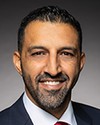Thank you for the question.
Those capacity-building projects are quite important, because they provide an opportunity to give communities the opportunity to overcome some of the barriers that stand in the way of their participation in those deployment projects, whether it be training in the community, energy planning or feasibility studies. They are smaller scale, but they are the precursor.
We often find that after those capacity-building investments have been made, many of those then turn into deployment projects with indigenous ownership in them. It's a bit of a trajectory of providing that capacity to then enable that ownership.





